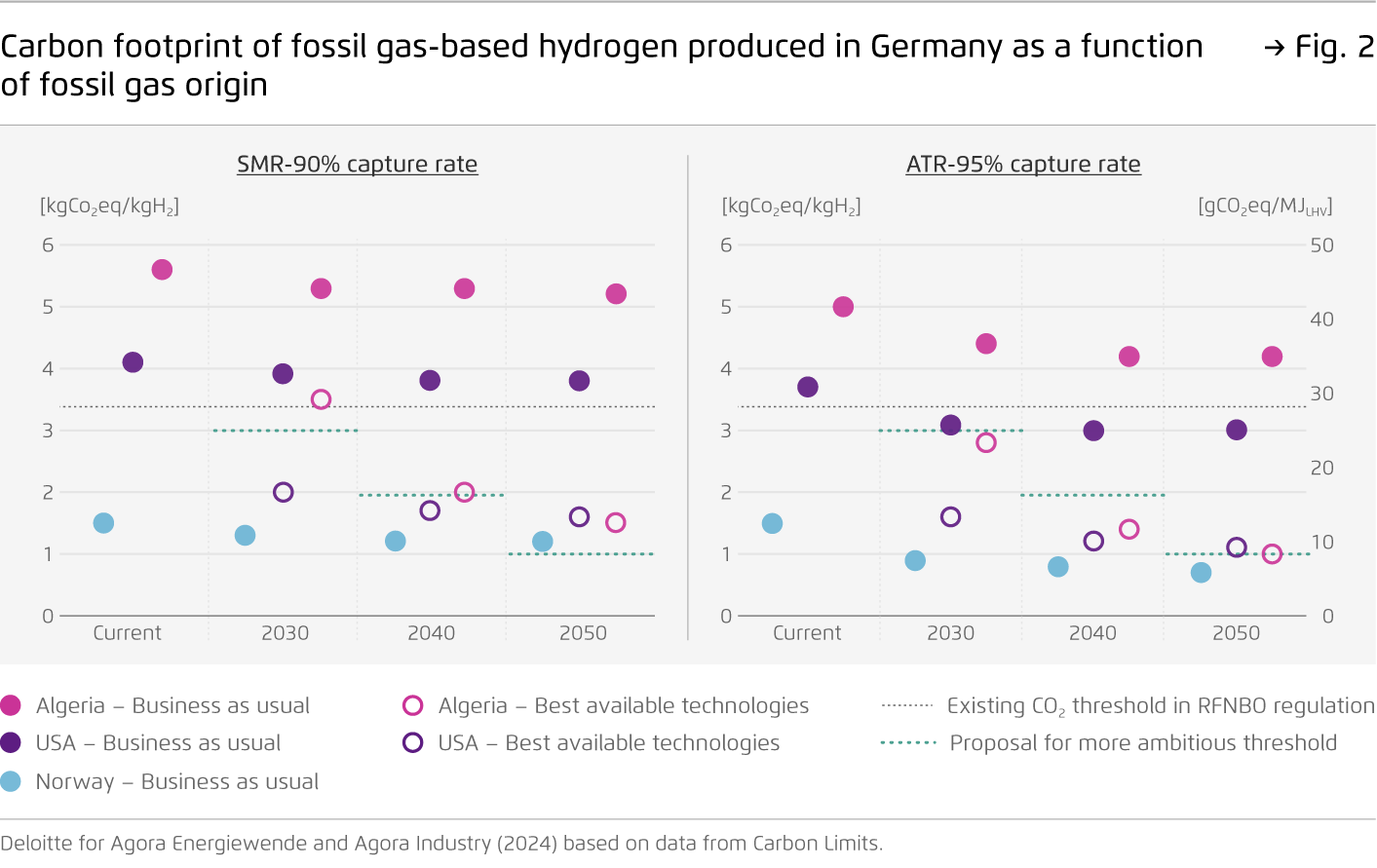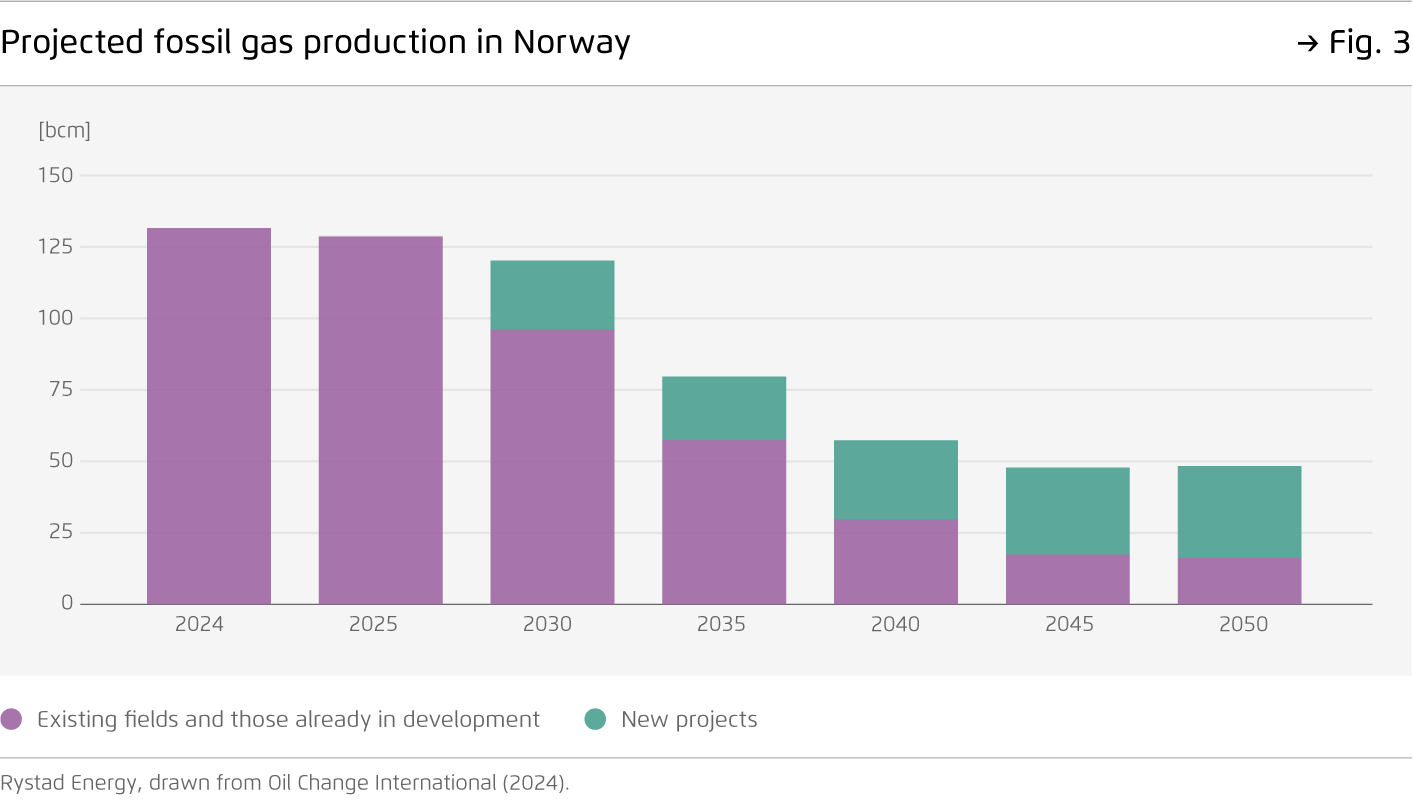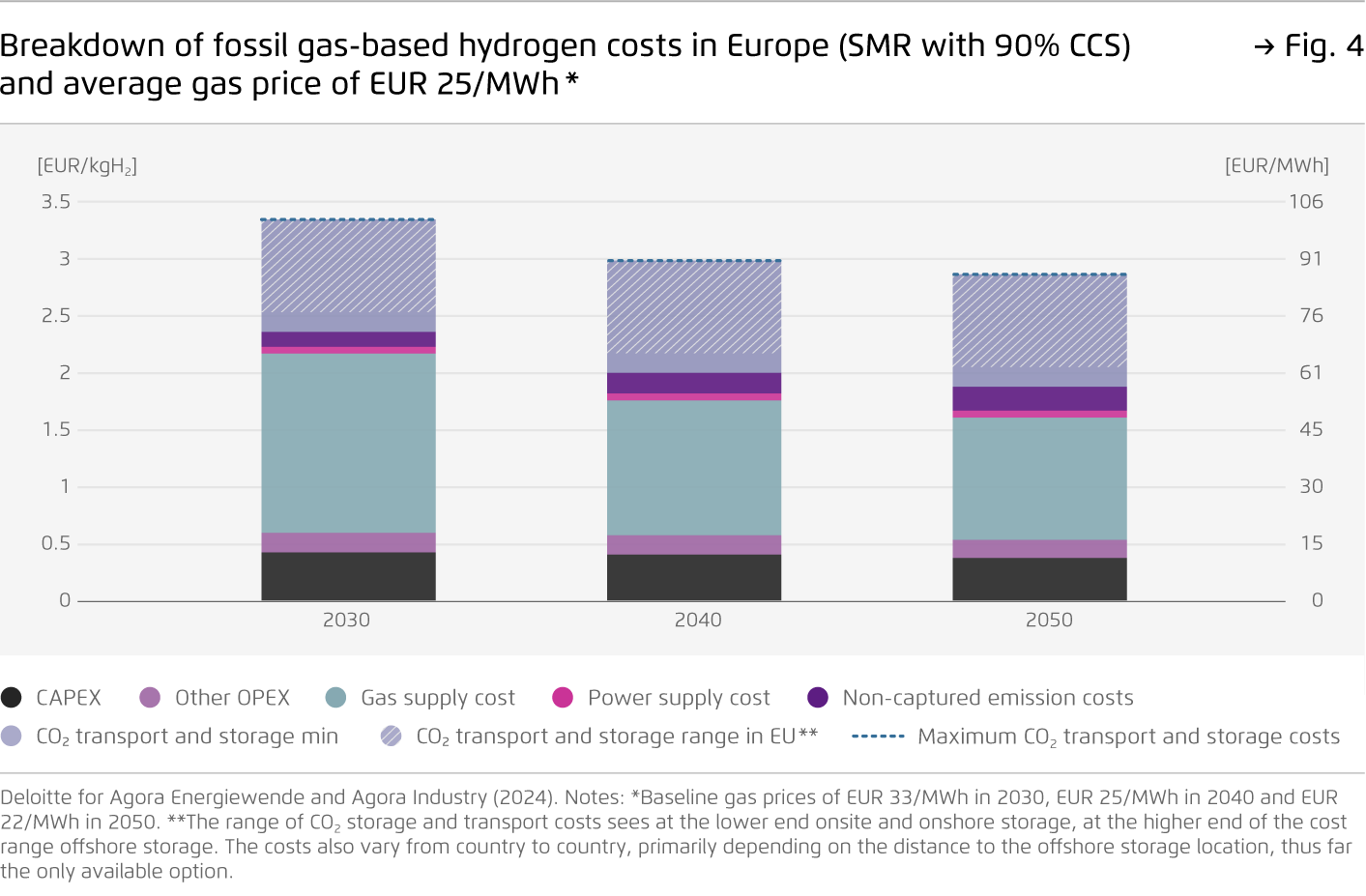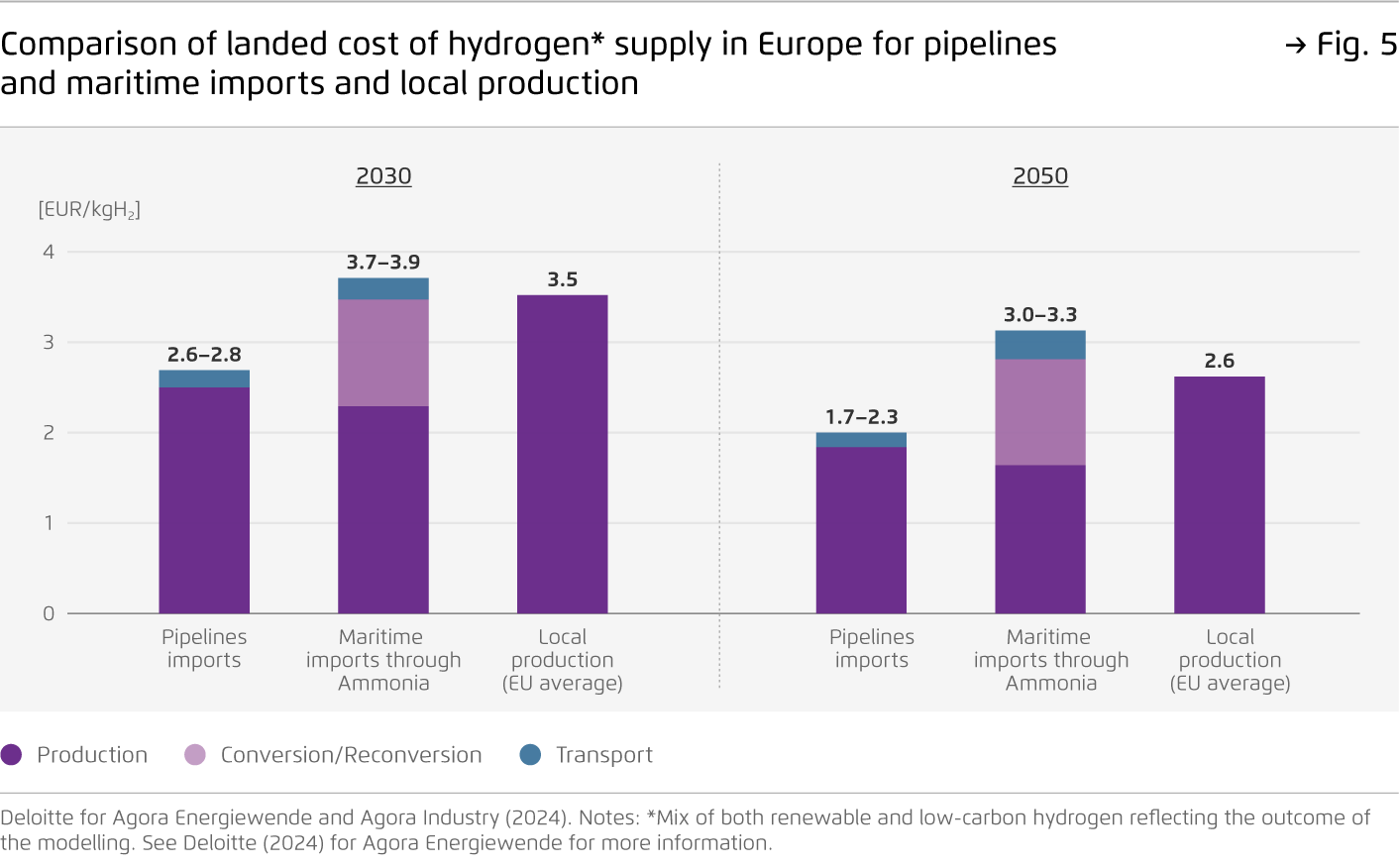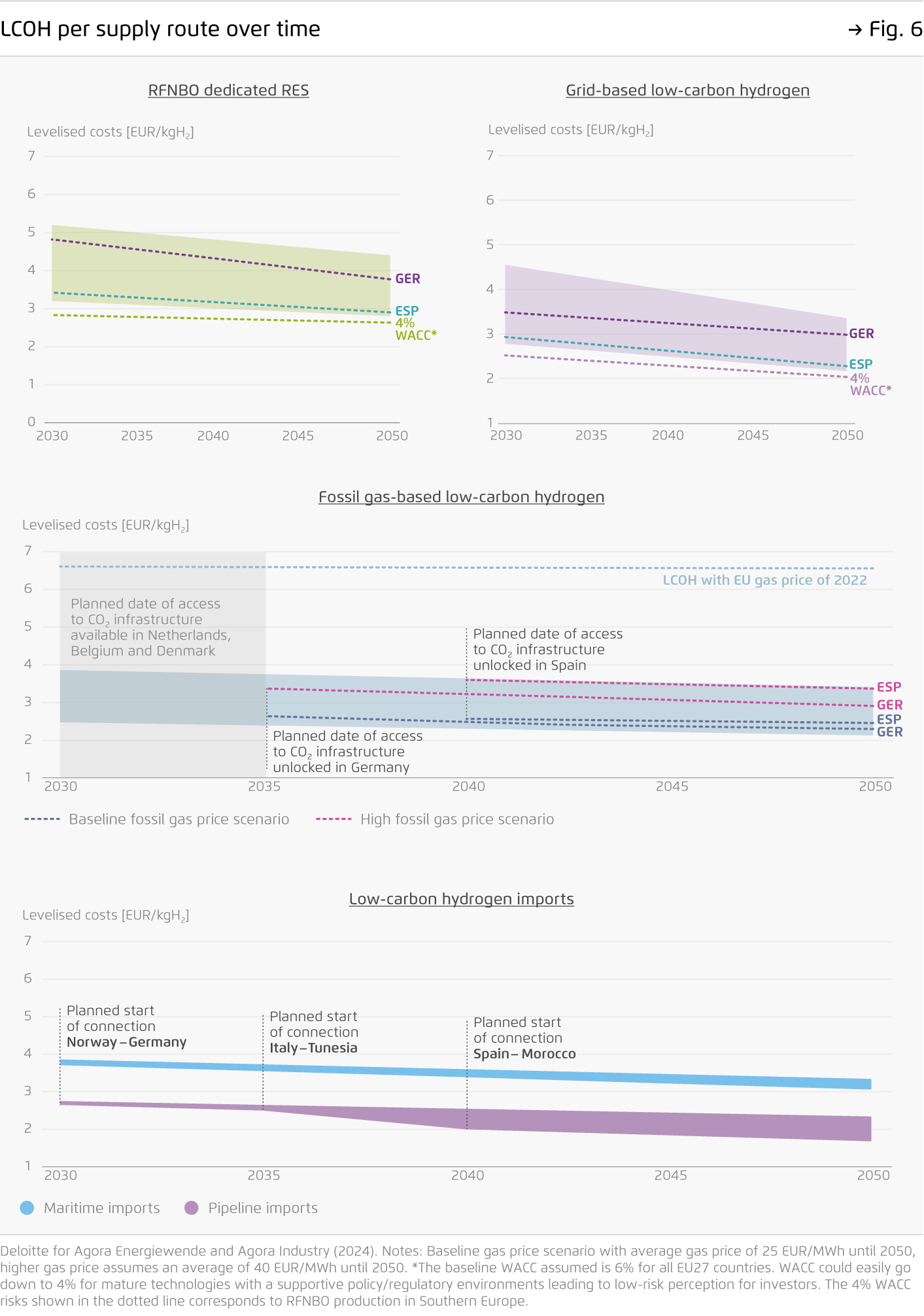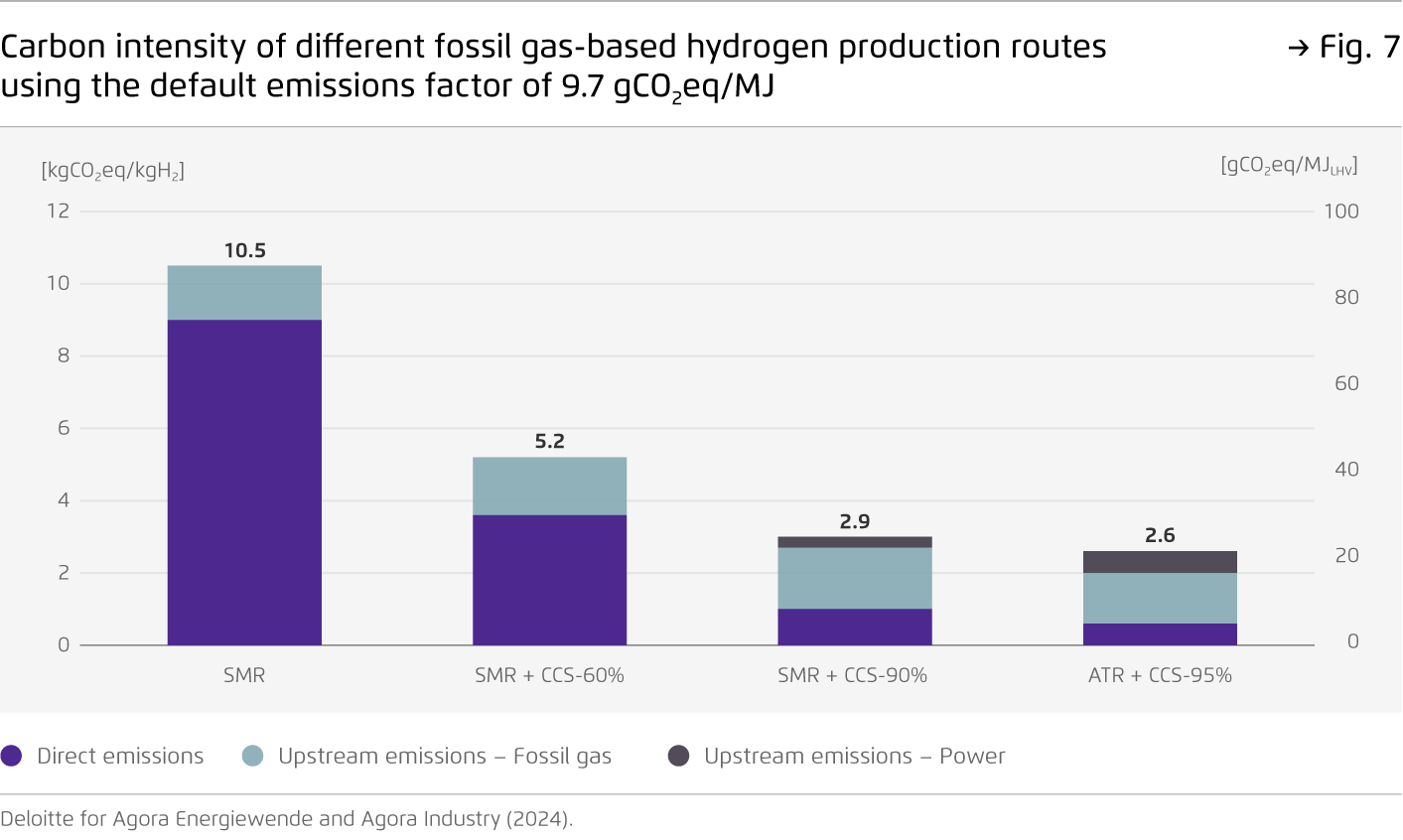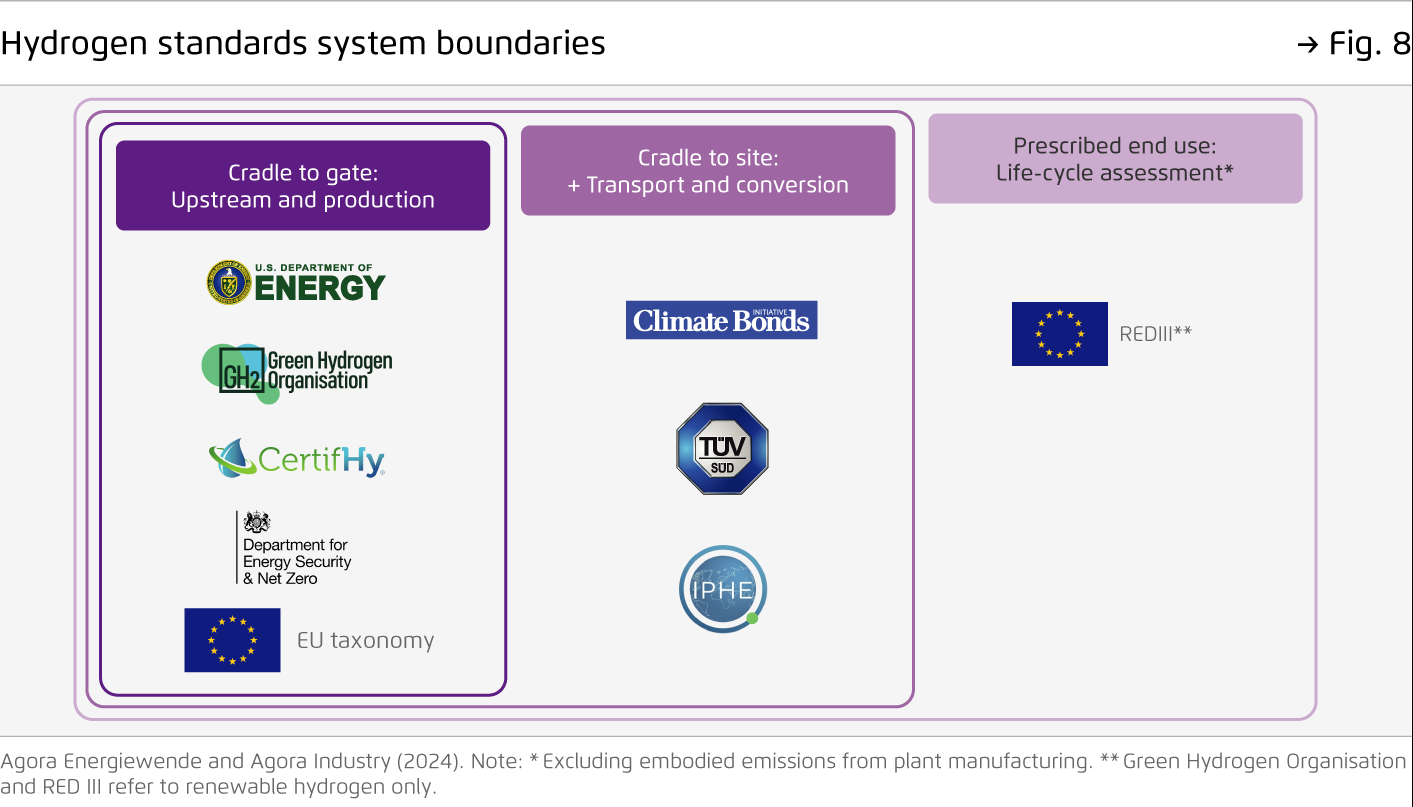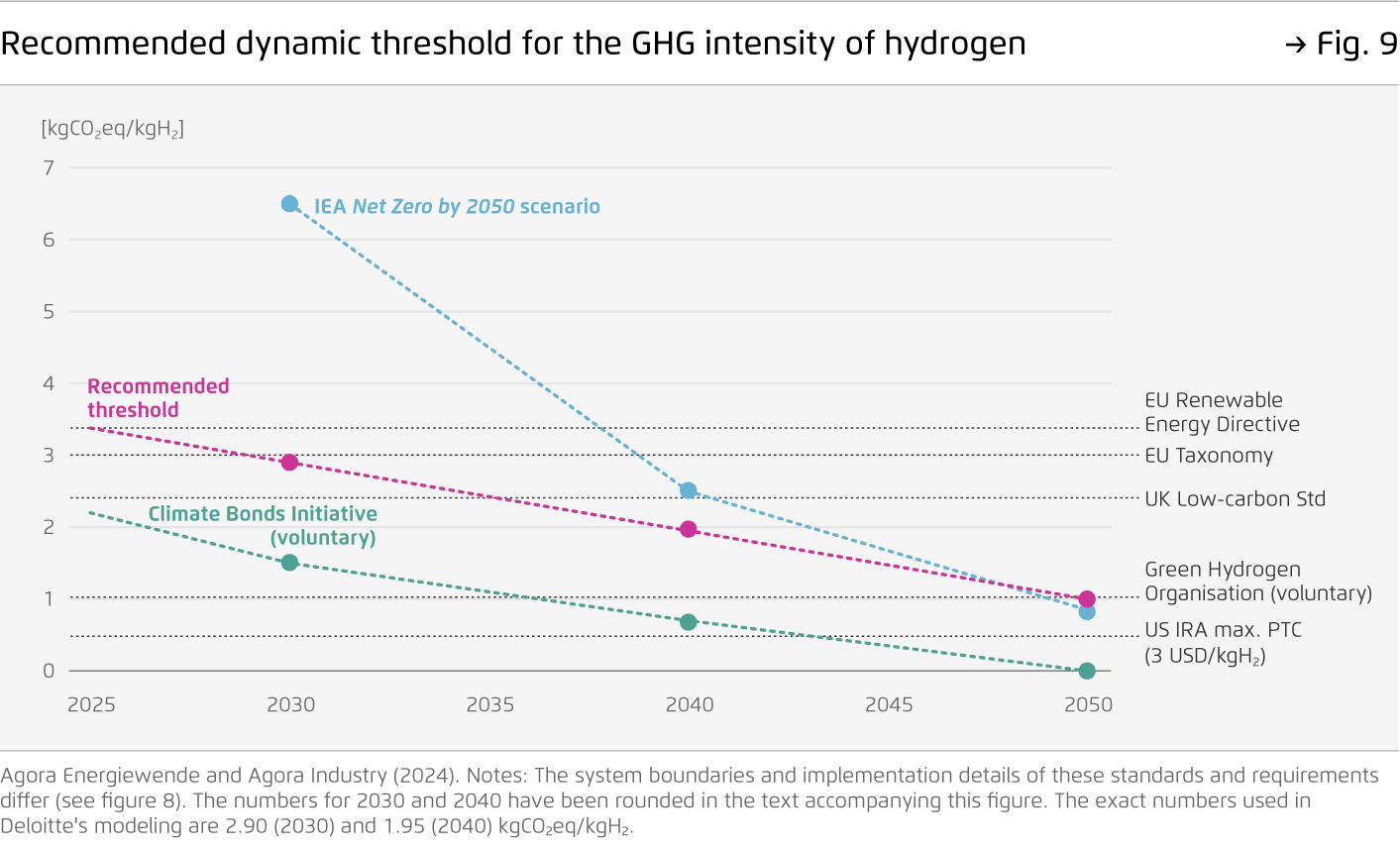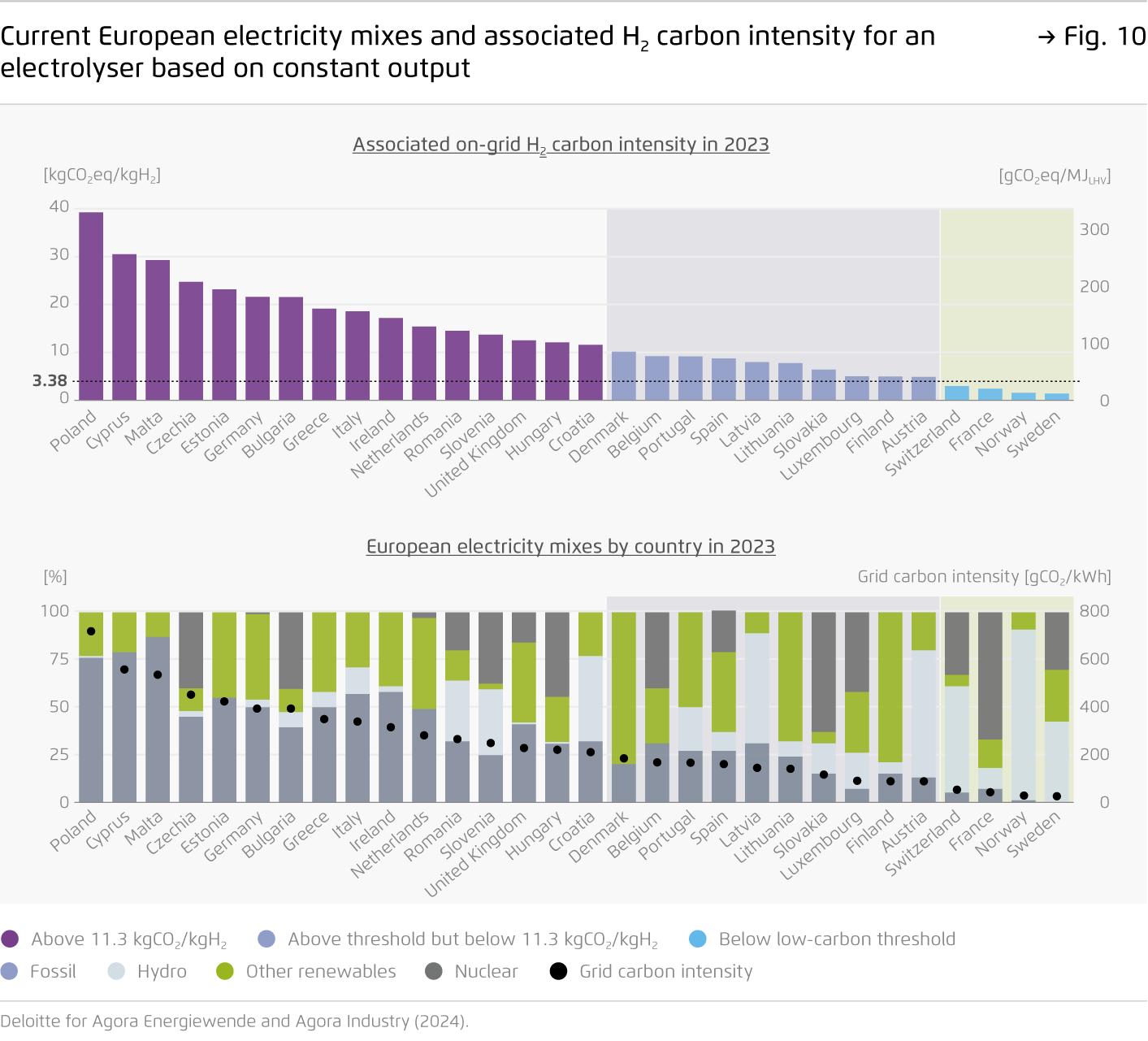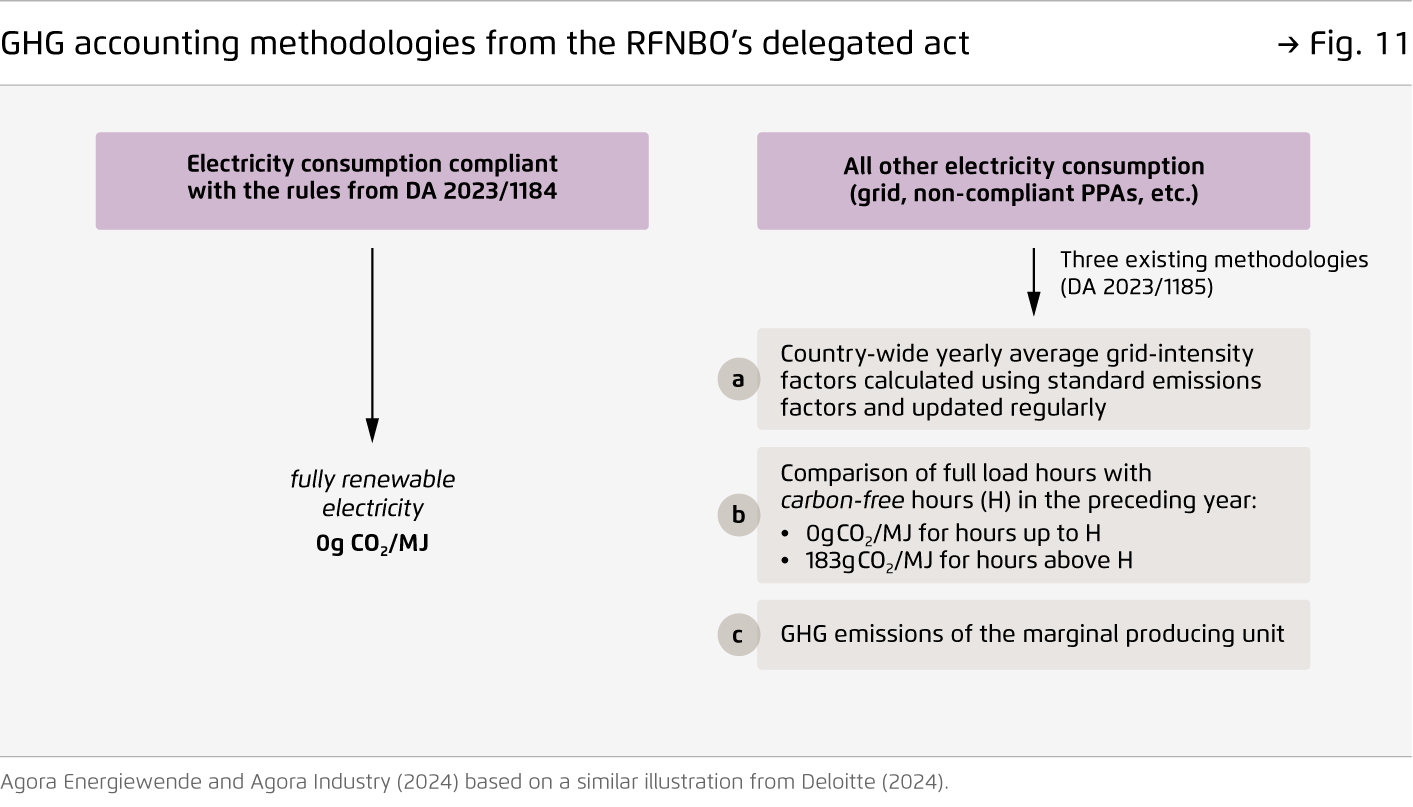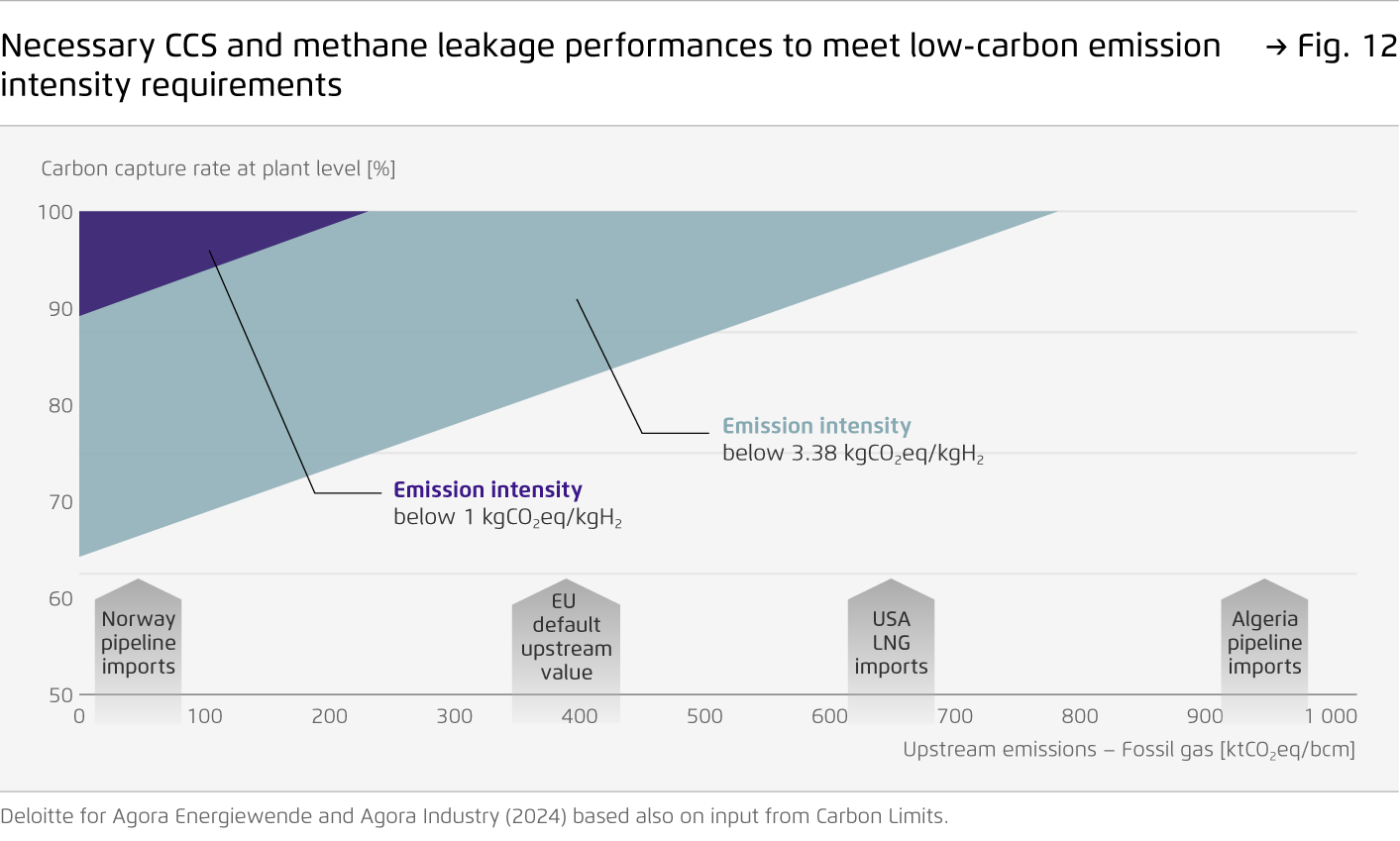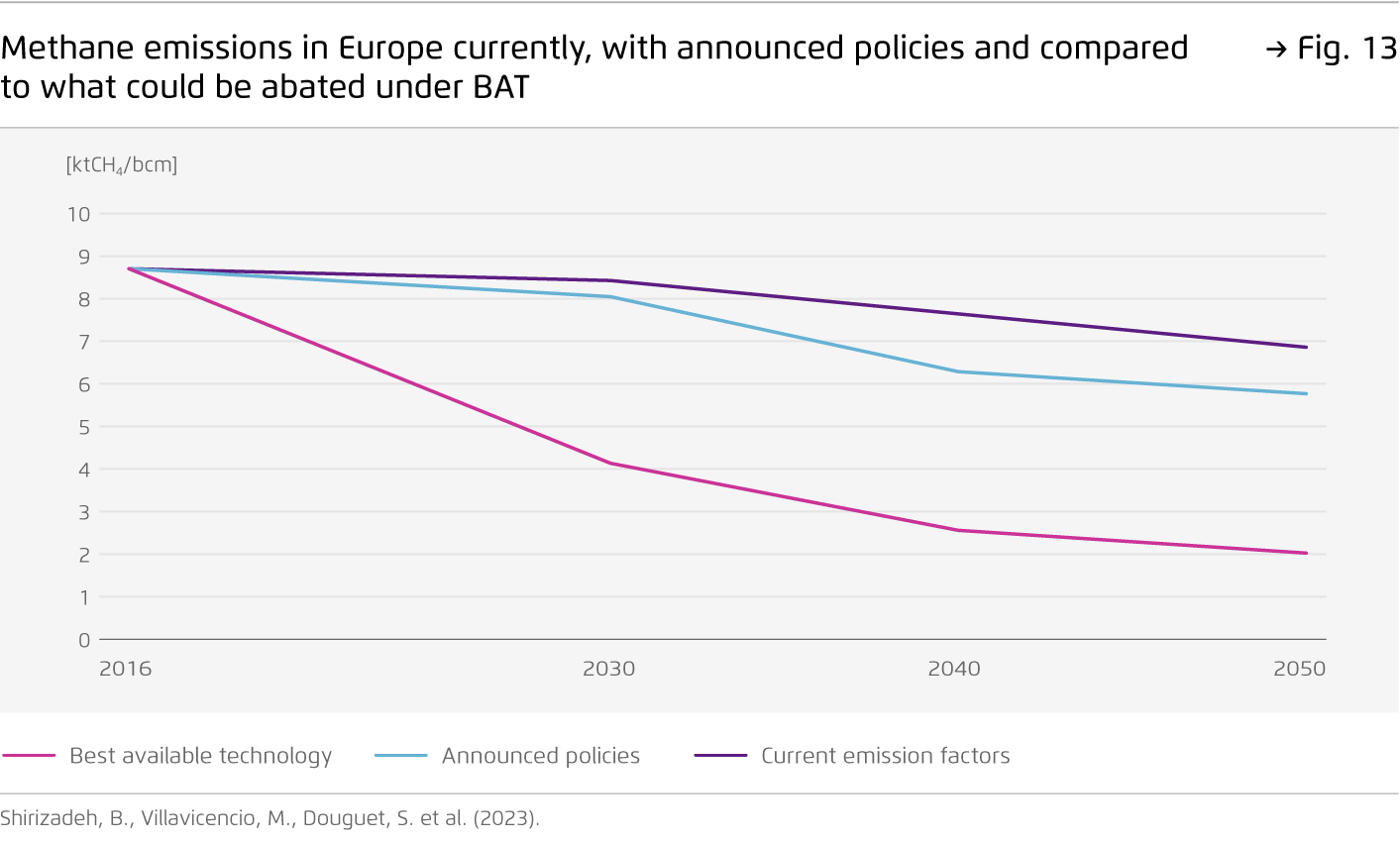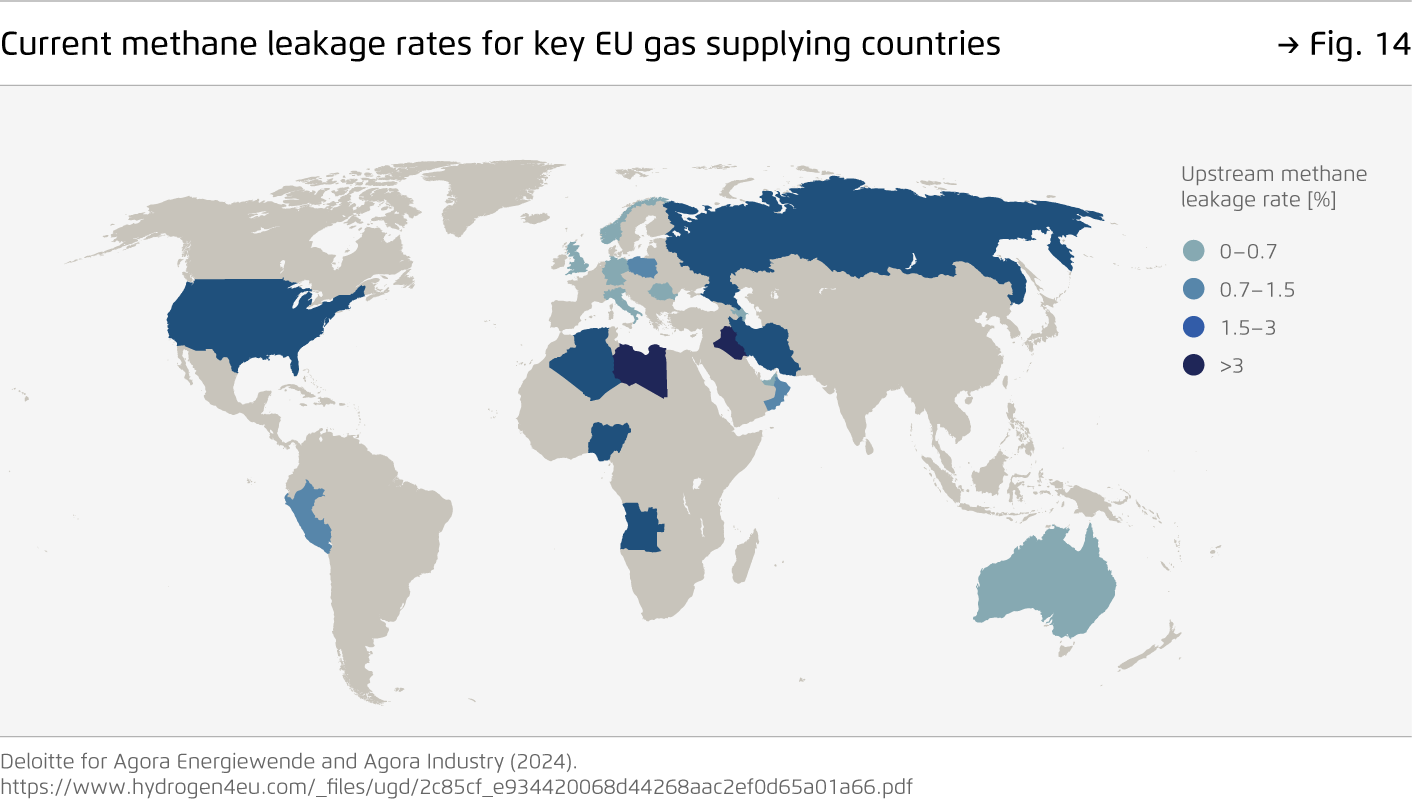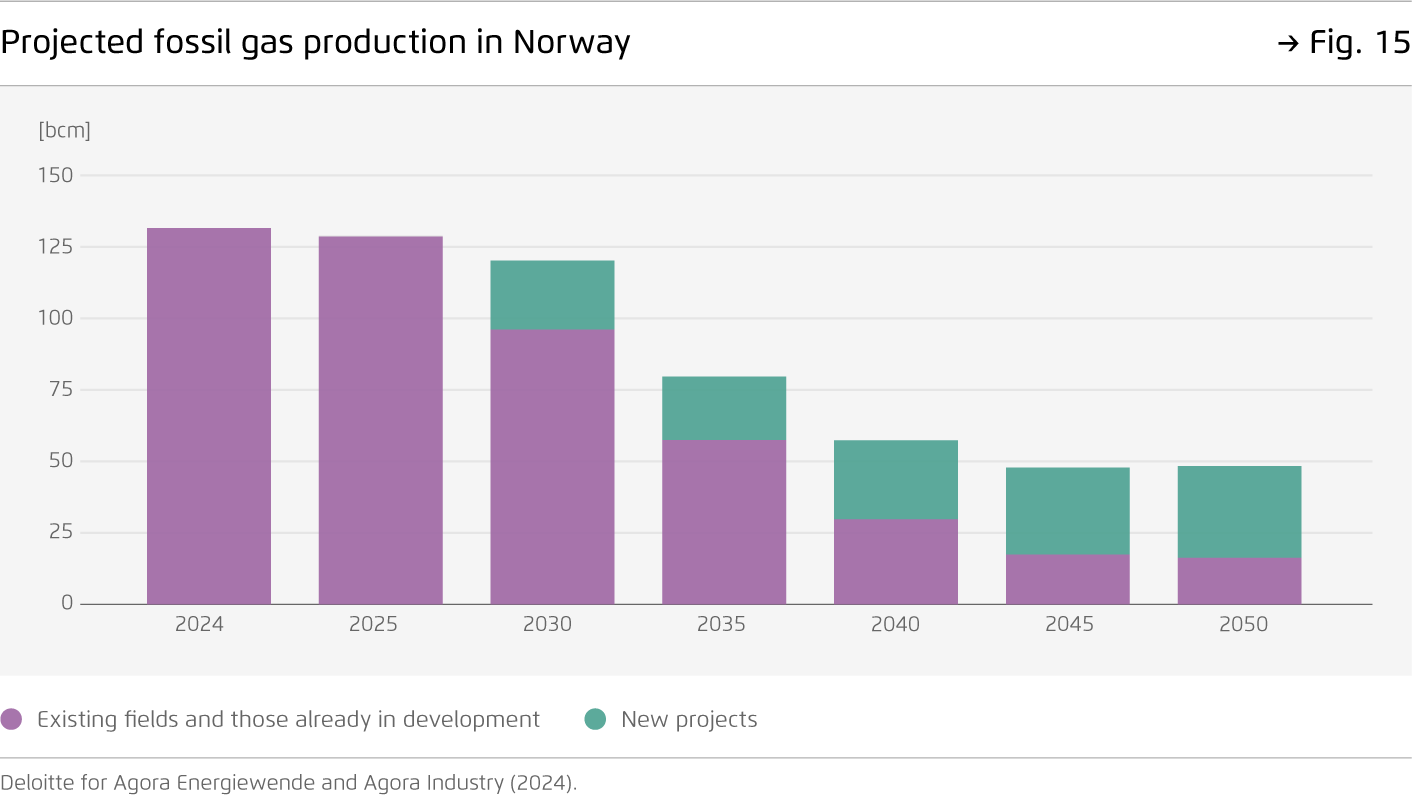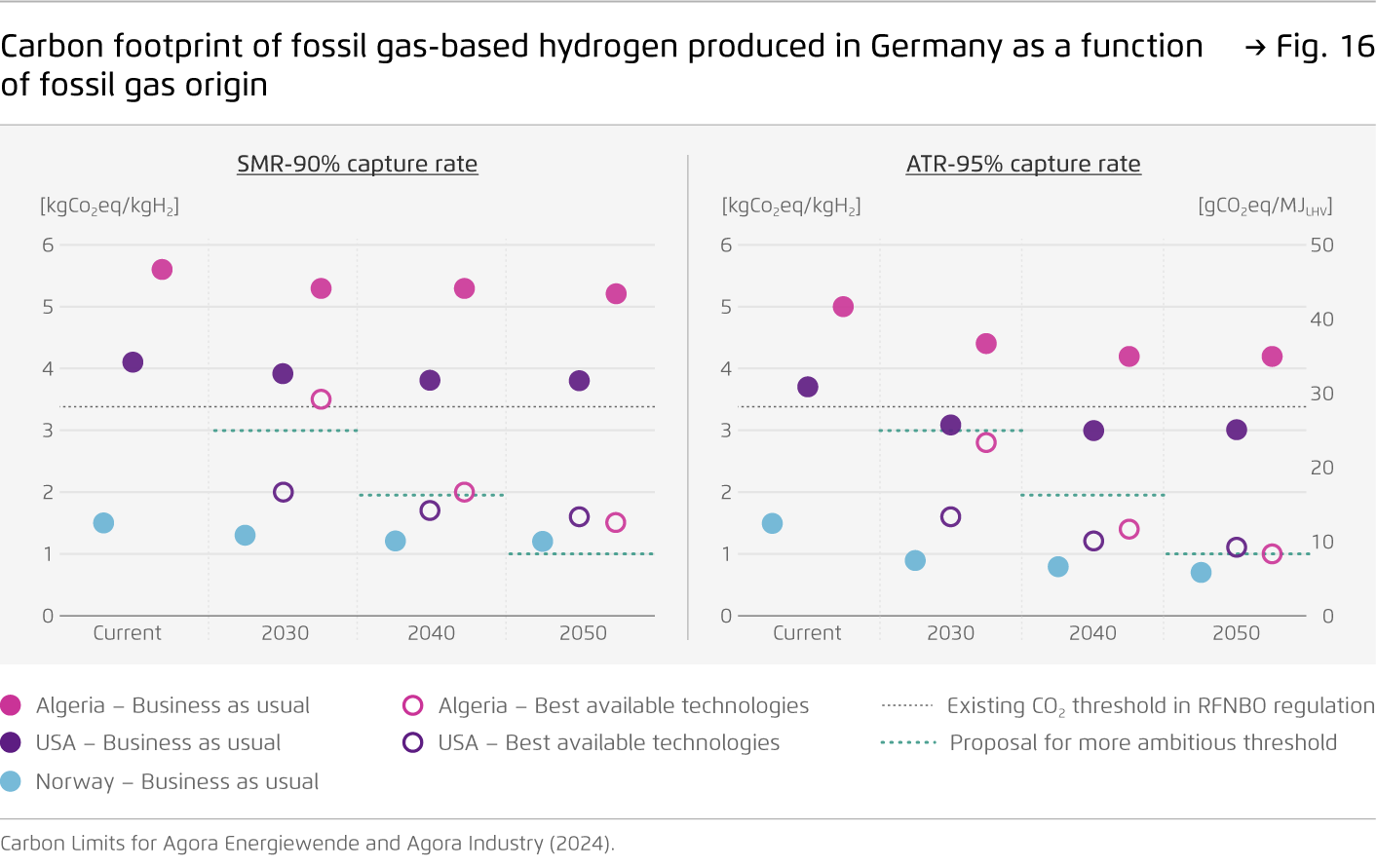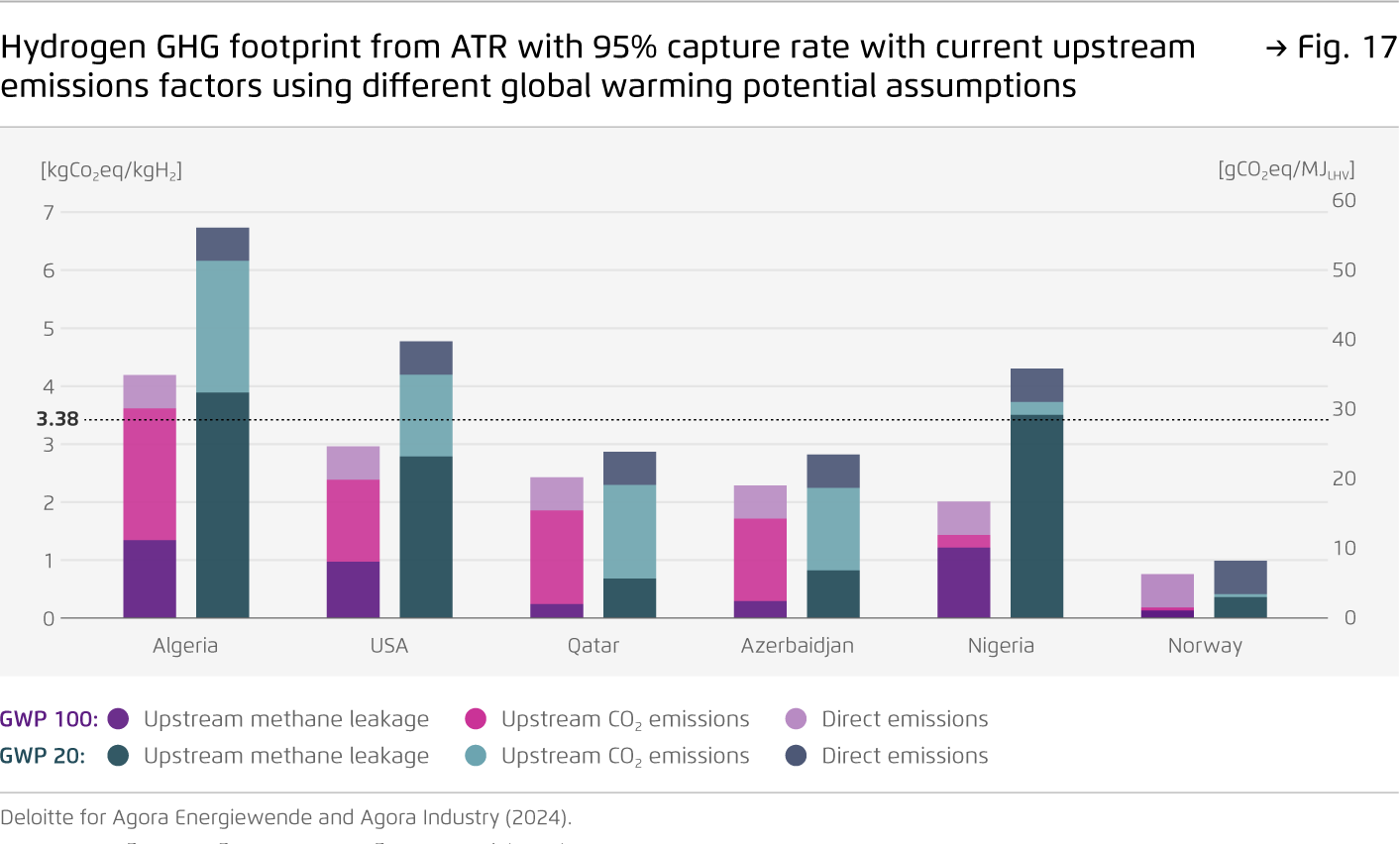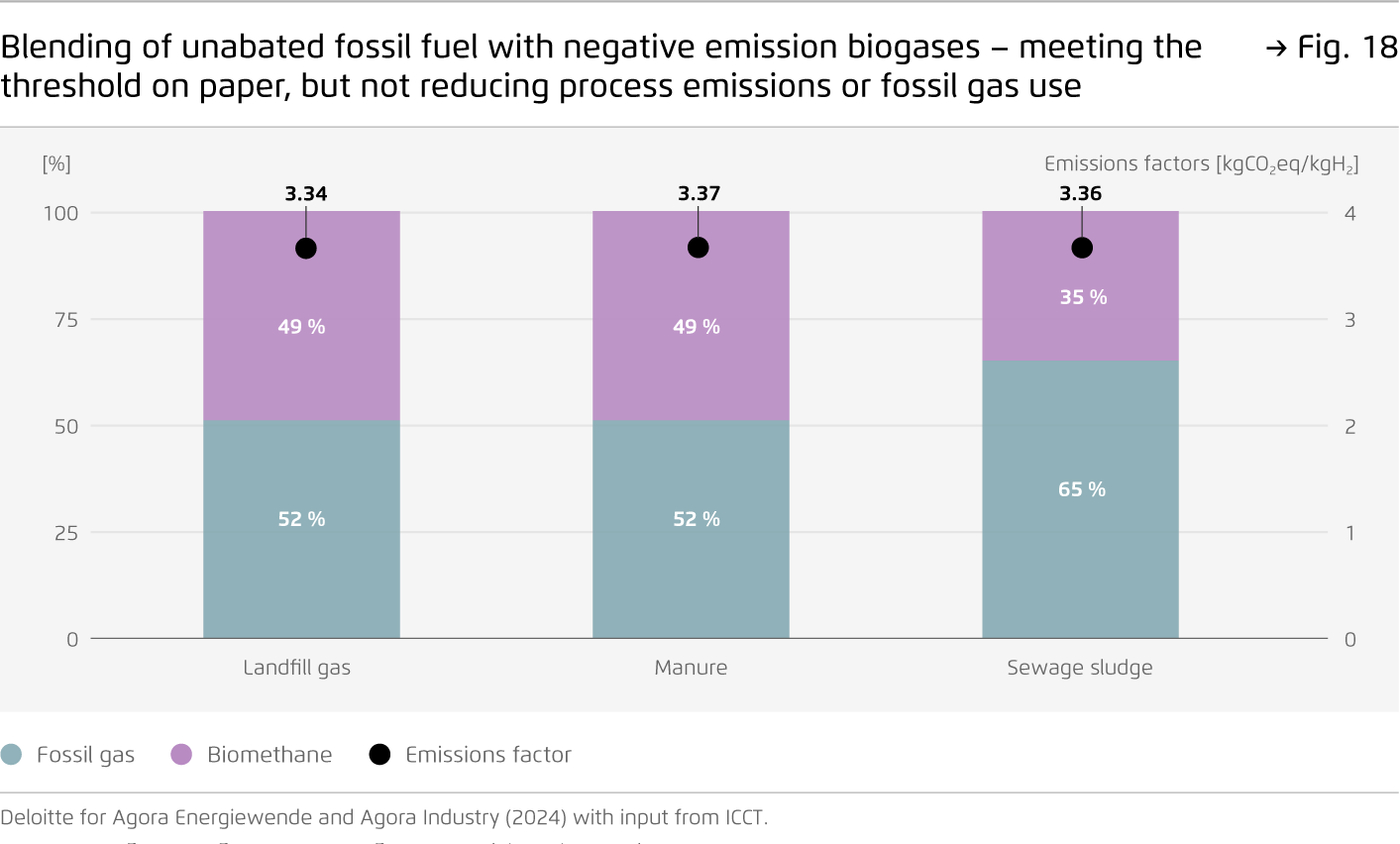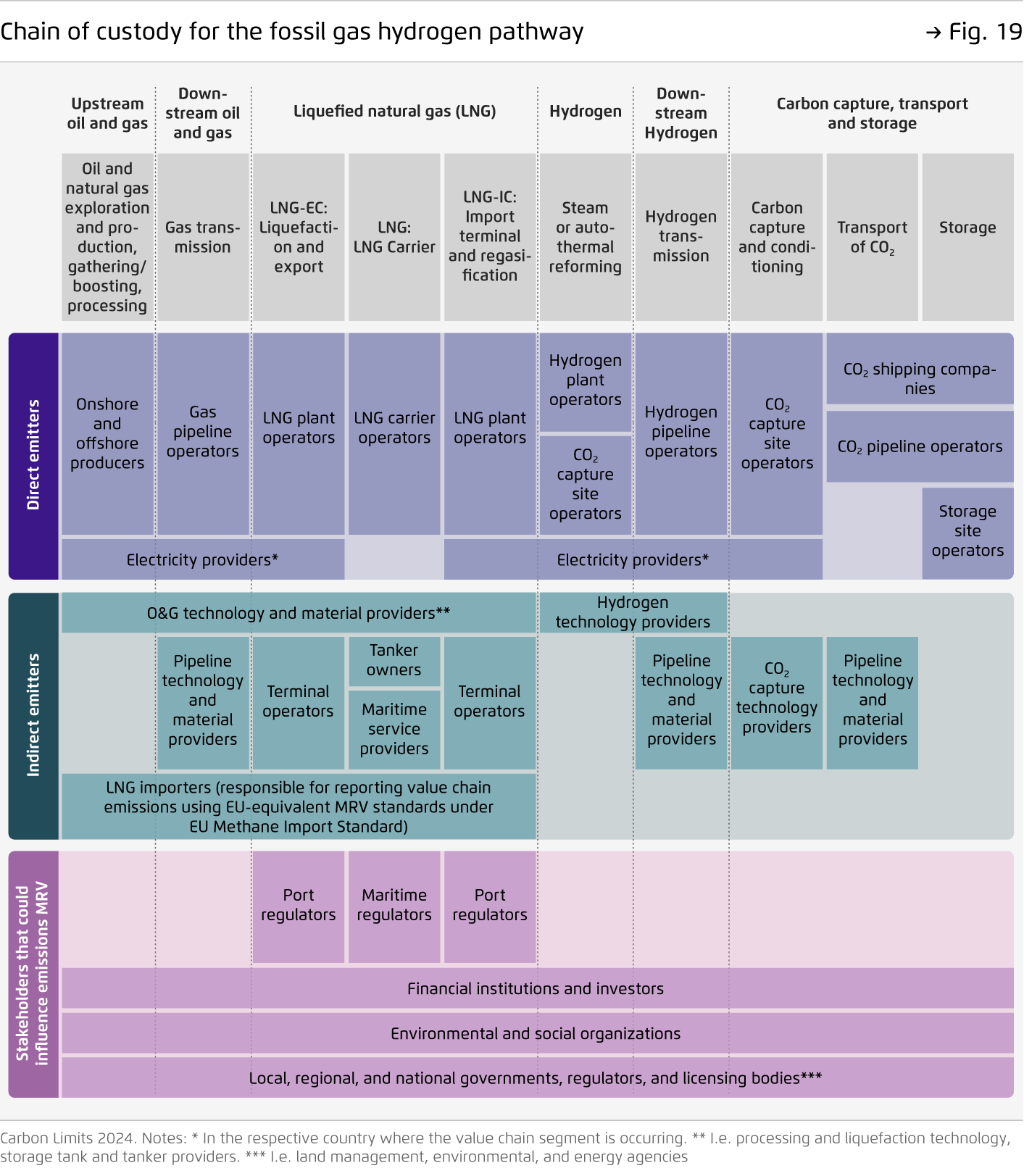-
Hydrogen will be critical to decarbonise hard-to-electrify applications particularly in industry.
While the EU should prioritise renewable hydrogen, low-carbon hydrogen could be cost competitive and sufficiently decarbonized over the next two decades. This requires upstream emissions to be effectively abated, highly efficient carbon capture technologies to become available at scale, and infrastructure for transport and permanent storage of captured CO2 to be built.
-
It depends on the CO2-intensity of the electricity used if grid-based hydrogen will be low carbon.
Operating an electrolyser 24/7 with grid-drawn electricity can today result in more emissions than producing conventional fossil hydrogen. In 2023, this would have been the case in 15 EU member states. Grid-based low-carbon hydrogen production should require accounting of actual hourly greenhouse gas emissions, rather than annual averages or default values. This would also incentivise investments into clean electricity and mirror conditions of renewable hydrogen producers.
-
Fossil-gas-based hydrogen would qualify as low carbon if upstream abatement and carbon capture rates combined achieve a 70 percent reduction of emissions compared to fossil fuel or 3.38 kgCO2eq/kgH2.
Meeting the 70 percent threshold with available CCS technology would today only be possible with fossil gas supplied by Norway. To incentivise best available technologies (BAT) to abate upstream emissions and ensure investments into CCS with capture rates of >90 percent, the greenhouse gas threshold for low-carbon fuels should be progressively reduced to 1 kgCO2eq/kgH2 by 2050.
-
By the mid 2030s, grid-based hydrogen will be either renewable or low carbon in most parts of Europe as the electricity mix will have a low-emission intensity.
Low-carbon hydrogen produced on the basis of fossil gas with BAT and CCS will be part of the transition for some time, especially in countries with fewer renewables. However, grid-based low-carbon hydrogen should be prioritised in Europe as it offers greater climate integrity and energy security compared with fossil-based alternatives.
Low-carbon hydrogen in the EU
Towards a robust EU definition in view of costs, trade and climate protection

Preface
All climate neutrality scenarios foresee a role for hydrogen, particularly in applications where direct use of clean electricity is currently not an option. However, whether hydrogen use increases or reduces greenhouse gas emissions depends on the way it was produced.
The new EU Hydrogen and Decarbonised Gas Markets Directive obliges the European Commission to adopt a delegated act with a methodology for assessing greenhouse gas emissions savings from low-carbon fuels. This methodology will be central to the integrity of the Fit for 55 framework and it will determine the future cost-competitiveness of renewable hydrogen.
Low-carbon hydrogen is produced in different pathways that come with distinct technology costs, emission profiles and regulatory challenges. Several technical and economic issues must be solved if low-carbon hydrogen is to make a positive contribution to Europe’s transition to climate neutrality.
There is no low-carbon hydrogen shortcut into a climate-neutral future! To ensure that low-carbon hydrogen actually comes with low greenhouse gas emissions throughout the entire value chain requires real political commitment and significant investments.
Key findings
Bibliographical data
Downloads
-
pdf 3 MB
Low-carbon hydrogen in the EU
Towards a robust EU definition in view of costs, trade and climate protection
All figures in this publication
Recommended dynamic threshold for the GHG intensity of hydrogen
Figure 1 from Low-carbon hydrogen in the EU on page 6
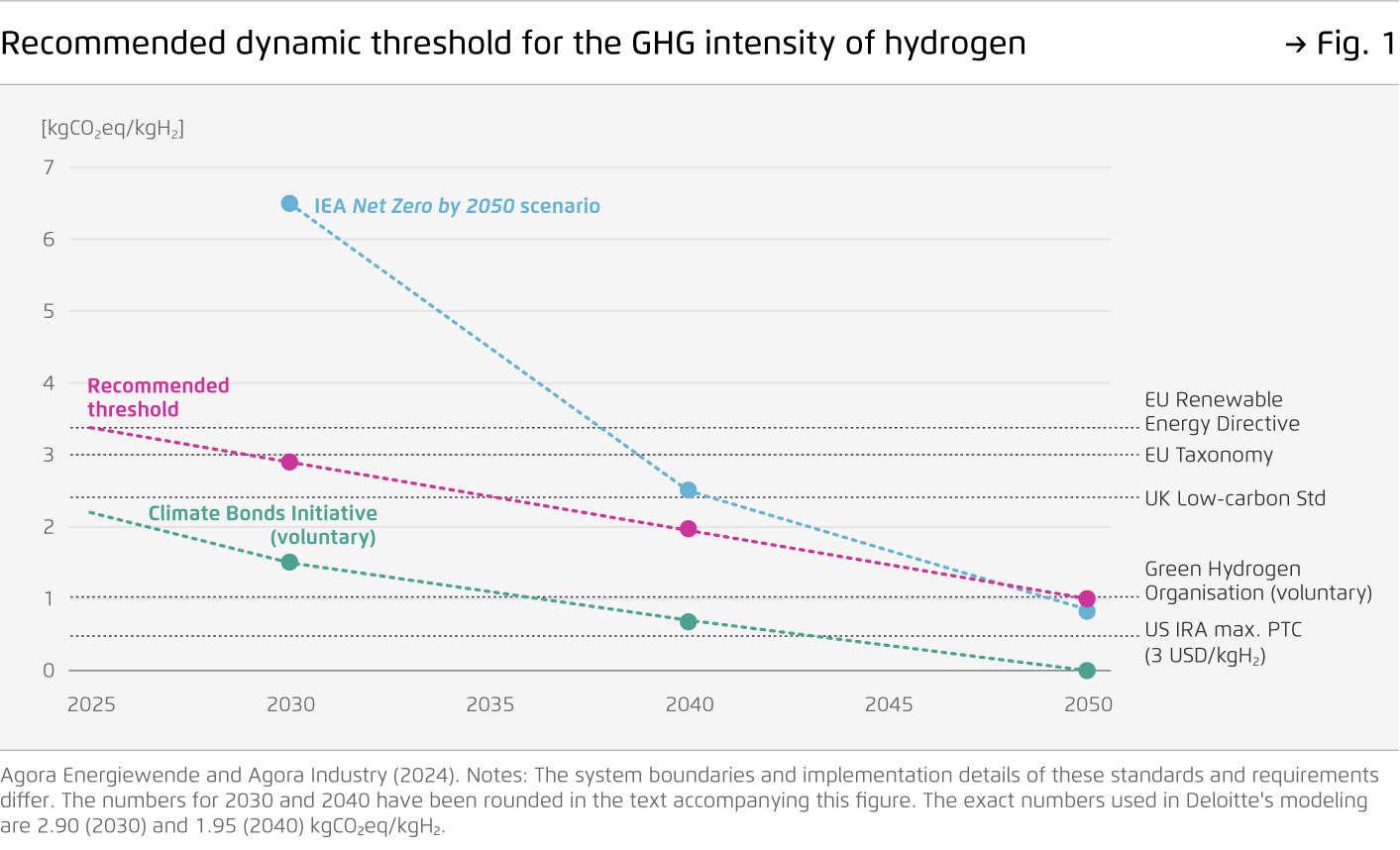
Carbon footprint of fossil gas-based hydrogen produced in Germany as a function of fossil gas origin
Figure 2 from Low-carbon hydrogen in the EU on page 7
